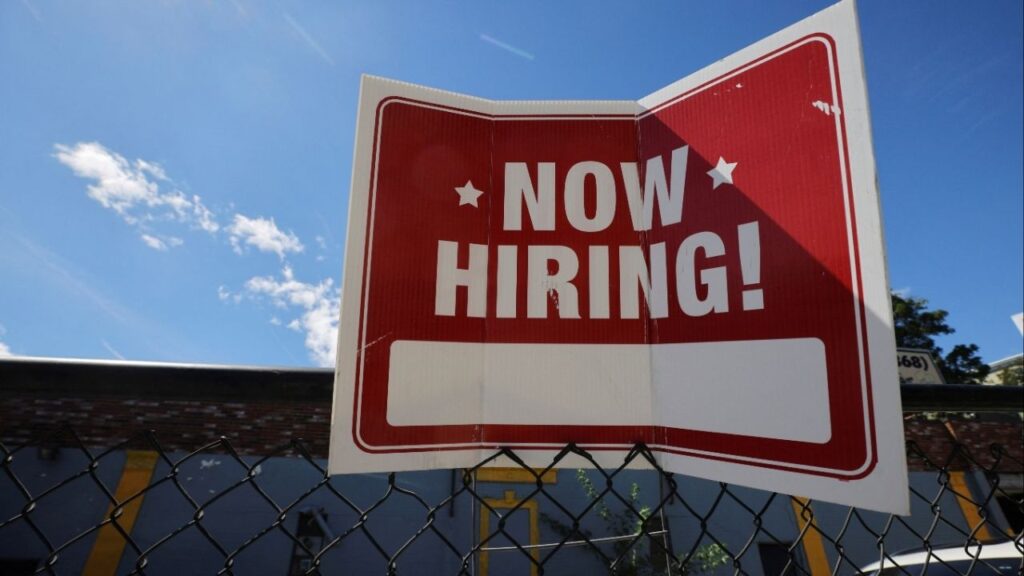People gather near an electronic display of an American flag in Times Square in New York on Aug. 9, 2024. (AP File)

- Inflation-adjusted median U.S. household income rose 4% in 2023, returning to pre-pandemic levels.
- The poverty rate fell slightly to 11.1%, down from 11.5% in 2022.
- Gender wage gap widened, as men's income grew faster than women's for the first time in 20 years.
Share
|
Getting your Trinity Audio player ready...
|
WASHINGTON — The inflation-adjusted median income of U.S. households rebounded last year to roughly its 2019 level, overcoming the biggest price spike in four decades to restore most Americans’ purchasing power.
The proportion of Americans living in poverty also fell slightly last year, to 11.1%, from 11.5% in 2022. But the ratio of women’s median earnings to men’s widened for the first time in more than two decades as men’s income rose more than women’s in 2023.
The latest data came Tuesday in an annual report from the Census Bureau, which said the median household income, adjusted for inflation, rose 4% to $80,610 in 2023, up from $77,450 in 2022. It was the first increase since 2019, and is essentially unchanged from that year’s figure of $81,210, officials said. (The median income figure is the point at which half the population is above and half below and is less distorted by extreme incomes than the average.)
“We are back to that pre-COVID peak that we experienced,” said Liana Fox, assistant division chief in the Social, Economic and Housing Statistics Division at the Census Bureau.
Related Story: Stock Market Today: Wall Street Rises as Inflation Report Confirms Price ...
Figures Could Help Harris in Debate
The figures could become a talking point in the presidential campaign if Vice President Kamala Harris were to point to them as evidence that Americans’ financial health has largely recovered after inflation peaked at 9.1% in 2022. Former President Donald Trump might counter that household income grew much faster in his first three years in office than in the first three years of the Biden-Harris administration, though income fell during his administration after the pandemic struck in 2020.
The report showed that the typical American household, though having regained its 2019 purchasing power, essentially experienced no increase in living standards from 2019 to 2023. That is a sharp difference from the preceding four years, when inflation adjusted median incomes rose 14% from 2015 through 2019.
The data is based on pre-tax incomes, including Social Security and other benefit programs, though it excludes noncash benefits such as food stamps and Medicaid.
By racial groups, median household income rose 5.4% for whites to $84,630, increased 2.8% for Black Americans to $56,490 and was unchanged for Hispanics at $65,540. Asian incomes were also largely unchanged at $112,800.
Census also calculated that 92% of Americans had health care in 2023, largely unchanged from the previous year, though the proportion of uninsured children ticked up a half-point to 5.8%.
RELATED TOPICS:
Categories

Valley Crime Stoppers Seeks ID of Man Accused in EECU Fraud Case

Fresno’s New Money Grab?

















